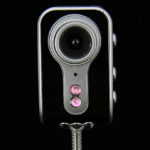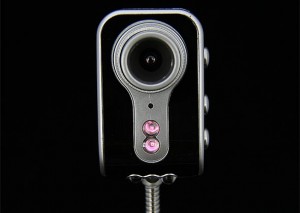
A school technology official at the center of a webcam spying scandal says the Pennsylvania student suing her employer should not have had any expectation of privacy, because he took a laptop home without authorization. The development comes as the district in question admits it secretly captured at least 56,000 photographs and screen shots from the web cameras of laptops it issued to high school students.
In a court filing April 20, Lower Merion School District technology coordinator Carol Cafiero said officials activated tracking software that photographed student Blake Robbins because he failed to pay a required insurance fee.
Cafiero, who is on paid leave while the district investigates the laptop controversy, claims that Robbins had no legitimate expectation of privacy because he broke the rules. She also denies claims by Robbins’ attorney that she might be a “voyeur.”
Robbins had previously broken “at least two” school computers and did not pay the insurance fee required to get permission to take home the Apple MacBook that later snapped his pictures, Cafiero’s attorney, Charles Mandracchia, wrote in the filing.
“When you’re in the home, you should have a legitimate expectation of privacy,” Mandracchia said in an interview with the Philadelphia Inquirer. “But if you’re taking something without permission, how can you cry foul when you shouldn’t have it anyway?”
A school district attorney declined to comment on Cafiero’s filing, which comes on the heels of the district’s latest disclosures about the number of photos taken over two years by the high-tech security system that was designed to track lost or stolen laptops distributed as part of the district’s education technology program.
District officials said on April 19 that the built-in cameras on students’ laptops had been switched on 146 times, taking 56,000 pictures in the process.
“It’s clear there were students who were likely captured in their homes,” said district lawyer Henry E. Hockeimer, who added that none of the images appeared to be “salacious or inappropriate.” The district said it remotely activated the tracking software to find 80 missing laptops in the past two years.
The FBI has opened a criminal investigation into possible wiretap violations by the district, and U.S. Sen. Arlen Specter, D-Pa., has introduced a bill to include webcam surveillance under the federal wiretap statute.
The district photographed Robbins 400 times during a 15-day period last fall, sometimes as he slept in bed or was half-dressed, according to his lawyer, Mark Haltzman. Other times, the district captured screen shots of instant messages or video chats the Harriton High School sophomore had with friends, he said.
“Not only was Blake Robbins being spied upon, but every one of the people he was IM chatting with were spied upon,” said Haltzman, whose lawsuit alleges wiretap and privacy violations. “They captured pictures of people [who] have nothing to do with Harriton. It could be his cousin from Connecticut.”
About 38,000 of the images were taken over several months from six computers the school said were stolen from a locker room.
The tracking program took images every 15 minutes, usually capturing the webcam photo of the user and a screen shot at the same time. The program was sometimes turned on for weeks or months at a time, Hockeimer said.
“There were no written policies or procedures governing the circumstances surrounding activating the program and the circumstances regarding turning off the activations,” Hockeimer said.
Robbins was one of about 20 students who had not paid the $55 insurance fee required to take the laptops home but was the only one tracked, Haltzman said.
The depositions taken to date have provided contradictory testimony about the reasons for tracking Robbins’ laptop. One of the two people authorized to activate the program, technology coordinator Carol Cafiero, invoked her Fifth Amendment right not to answer questions at the deposition, Haltzman said.
About 10 school officials had the right to request an activation, Hockeimer disclosed April 19.
The tracking program helped police identify a suspect not affiliated with the school in the locker room theft, Hockeimer said. The affluent Montgomery County, Pa., district distributes the Macintosh notebook computers to all 2,300 students at its two high schools, Hockeimer said.
As part of the lawsuit, a federal judge this week is set to begin a confidential process of showing parents the images that were captured of their children.
The school district expects to release a written report on an internal investigation in the next few weeks, Hockeimer said. School board President David Ebby has pledged the report will contain “all the facts—good and bad.”
See also:
Family: Pa. district snared thousands of secret webcam images
School webcam spying prompts call for new laws
Experts: Schools can track laptops less intrusively
Official: FBI probing school webcam spying case
School district sued for using webcams to spy on students
- ‘Buyer’s remorse’ dogging Common Core rollout - October 30, 2014
- Calif. law targets social media monitoring of students - October 2, 2014
- Elementary world language instruction - September 25, 2014

